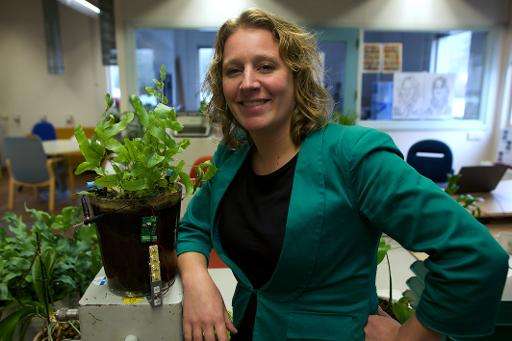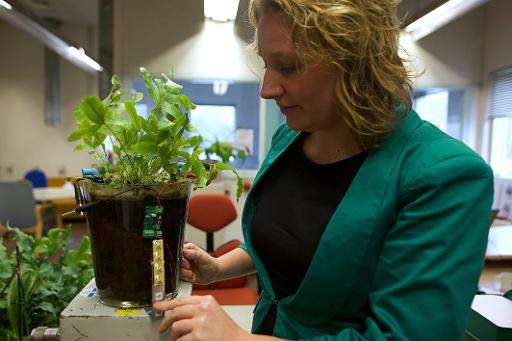Dutch 'paddy power' pulls electricity from rice fields

Dutch scientists have developed a revolutionary system that could one day help isolated villages around the world steadily generate electricity from mundane water-logged plants such as rice growing in paddy fields.
"It's based on the principle that plants produce more energy than they need," said Marjolein Helder, co-founder of Plant-e, which makes products that harvest energy from living plants.
"The advantage of this system over wind or solar is that it also works at night and when there's no wind," she told AFP.
Founded in 2009, Plant-e is perfecting a system originally dreamt up at Wageningen University and patented in 2007.
All that the system requires to produce electricity is a plant growing in water, be it mangrove swamps, rice paddies, bogs or simply in a pot or your garden.
"It's just the beginning and lots of things still need to be greatly improved, but the potential is enormous," said Jacqueline Cramer, professor of sustainable innovation at Utrecht University and former Dutch environment minister.
"If the system becomes good enough, it could provide electricity for isolated areas or even be installed in our cities and countryside to produce clean electricity," she told AFP.
The technology harnesses the excess organic matter produced by the plant during photosynthesis, which is expelled through the plants roots and consumed by micro-organisms.
That consumption frees up electrons, which can then be harvested by placing carbon electrodes close to the roots to generate electricity.
Getting power from plants is not new, "but here we don't need to damage the plant, it's a non-invasive system," said Helder.
Electricity stops being produced if the water evaporates or freezes, but "you just need to add water or wait for the ice to melt," she said.
"In many parts of the world they don't have this kind of problem."

Long way to go
Plant-e, based in Wageningen in the eastern Netherlands, currently sells a system consisting of 50-centimetre (around 20-inch) square plastic plates containing the technology that can slot together and hold the plants.
This system is designed for parks or rooftops, but comes with a hefty price tag: 60,000 euros ($66,000) to cover 100 square metres (around 1,000 square feet).
But the flagship product is still being developed: tubes that can be quickly and easily submerged to start generating electricity in a watery area.
The system's potential is vast, but particularly suited to Southeast Asia, with its rice fields, mangrove swamps and other wetlands where electricity is often unavailable.
Less than a third of the population of Cambodia has access to electricity and less than half in Myanmar. In Bangladesh, 55 percent of people have electricity and in Laos 66 percent, according to the World Bank.
But Plant-e, which manages to survive thanks to subsidies, still has a long way to go: the product's cost and efficiency must be vastly improved.
Currently, a 100-square metre system provides enough electricity to charge a mobile phone, power some LED lights or a wireless Internet access point.
But in "a few years", Plant-e hopes that a similar-sized system will provide 2,800 kilowatt-hours, or around 80 percent of the electricity needs of an average Dutch family of 2.2 people.
Two large-scale systems have been installed in the Netherlands on a road bridge and a hi-tech startup campus at a total cost of 120,000 euros, with the support of municipal authorities.
"We wanted to help develop this technique which has enormous potential," said Bas Boeker, who manages state-owned properties including the startup campus.
Initial results are encouraging, say the developers, and the problems are not necessarily those you would expect: the LED lamps on the road bridge project have already been destroyed by vandals.
© 2015 AFP



















